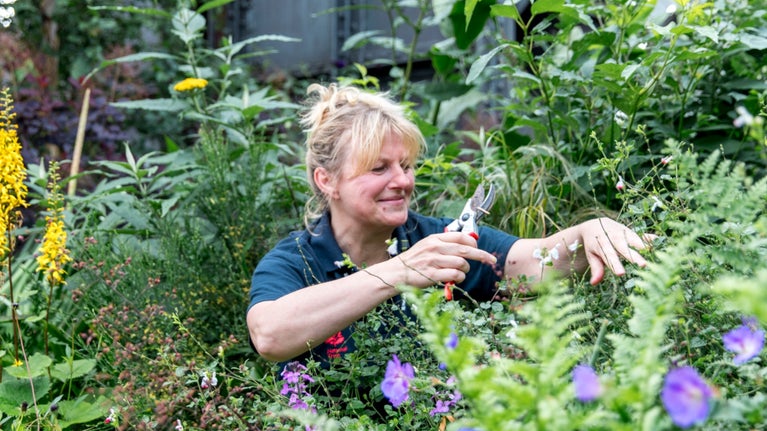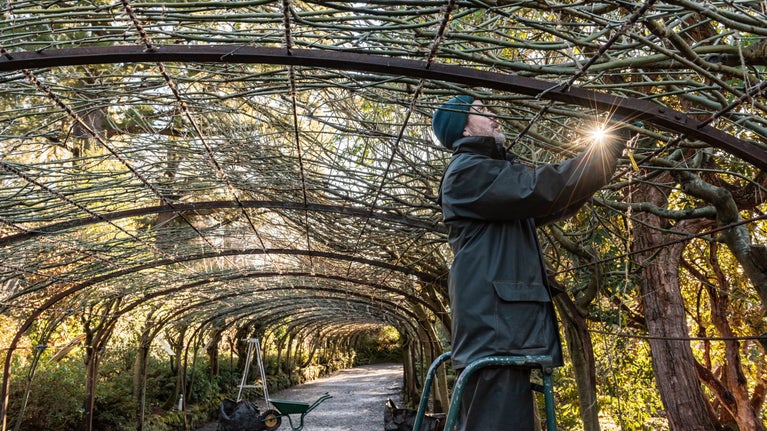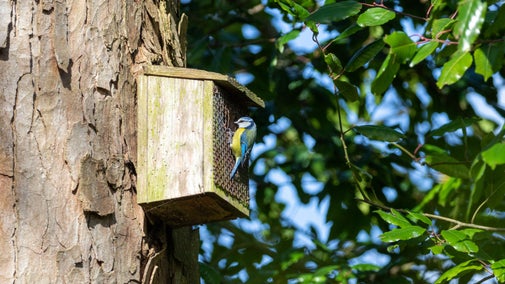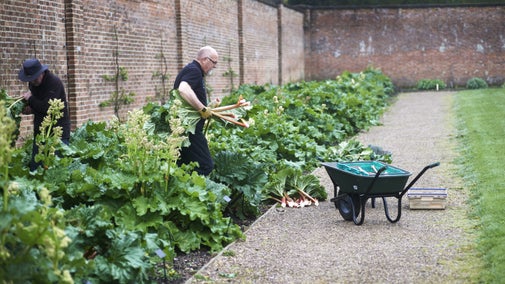
Get gardening
Our gardeners are on hand with ideas for your garden, plot or window box. From planting veg to tackling weeds, they’ve got all the important topics covered.

Even in winter, gardens and growing spaces are full of nature and new growth. There are plenty of jobs to get stuck into, including looking after wildlife, planting for winter colour, planting and pruning rose bushes or planning ahead for warmer days.
Most types of roses should be pruned in January or February, before the leaves start to emerge. Modern roses can be cut back hard while the older types should be pruned more gently. Always remove any dead, damaged or diseased stems.
Bare root trees and bushes can be bought and planted between November and March. Just make sure you don't plant when the soil is frozen and they should establish well. Prune apple and pear trees, gooseberries and currant bushes too.
Don’t be tempted to be too tidy. Leaving the dry leaves and stems on your herbaceous perennials will provide a place for many insects to overwinter. Dry seedheads can also be good for birds and small mammals, and they glow in the winter sun.
Grab the garden fork and turn your compost. This makes sure it breaks down well and is ready to use when you need it.
If you have space for a new bin or pile, you can turn your compost into it and leave it to breakdown while you refill the empty one. Remember to check heaps for overwintering hedgehogs and other creatures first.

In freezing weather, put out fresh food and clean water for birds, or gently melt the ice on your ponds to allow garden birds to have a drink.
A healthy garden ecosystem also needs insects, so why not make a simple bug hotel with wood and sticks? Fill the gaps with hollow plant stems and pine cones to make a welcoming place for bugs to hide.
Drain outside taps and isolate them if you can. This will prevent burst pipes and a damaged tap in frosty weather. If you can’t isolate your garden tap, then insulate exposed pipes and fit a tap cover to protect it from the cold.
Move tender plants in pots to a sheltered place or cover them with fleece, hessian or straw. Keeping the roots dry will significantly improve these plants' chances of survival through winter.
If the weather is bad outside, you could head indoors and start preparing your garden for spring. Some key things to consider include layout, plant choices, spaces for composting, water collection, storage and wildlife. You can stay on top of key timings by starting a diary.
Late winter is also a good time for propagating perennials if you didn’t get a chance during the autumn.

There are many different types of plants that can bring colour and interest to your garden during the winter months. Here are just some of our gardeners' favourites.
Perhaps the best known of the winter flowers, snowdrops are thought to have been introduced to British gardens in the late 15th century from mainland Europe. They flower between January and March.
Crocuses are a popular sight during winter and can be planted in containers or in small groups in garden borders. For the full wild effect, they are best planted in drifts under trees.
These yellow, buttercup-like flowers sit within a perfect rosette of green sepals. Like many winter-flowering plants, the leaves appear later.
Despite the common name of winter rose, hellebores are members of the buttercup family. They flower all the way through winter, from late November onwards, and their colours range from pure white to dark purple.

Our gardeners are on hand with ideas for your garden, plot or window box. From planting veg to tackling weeds, they’ve got all the important topics covered.
Looking for new ways to help your local wildlife? Here are some of our top tips on how to make your garden a haven for animals, birds and insects.

Discover top tips on getting the most from your allotment or patch, and find out why growing your own fruit and vegetables is good for you in more ways than one.

Discover some top tips for growing common snowdrops in your outdoor space. Find out when, where and how to plant your snowdrops to end up with your own carpet of white flowers every spring.

Discover which vegetables and fruit to harvest, plant and buy each month with our handy guide. Growing your own fruit and vegetables reduces food miles, which helps the environment.
